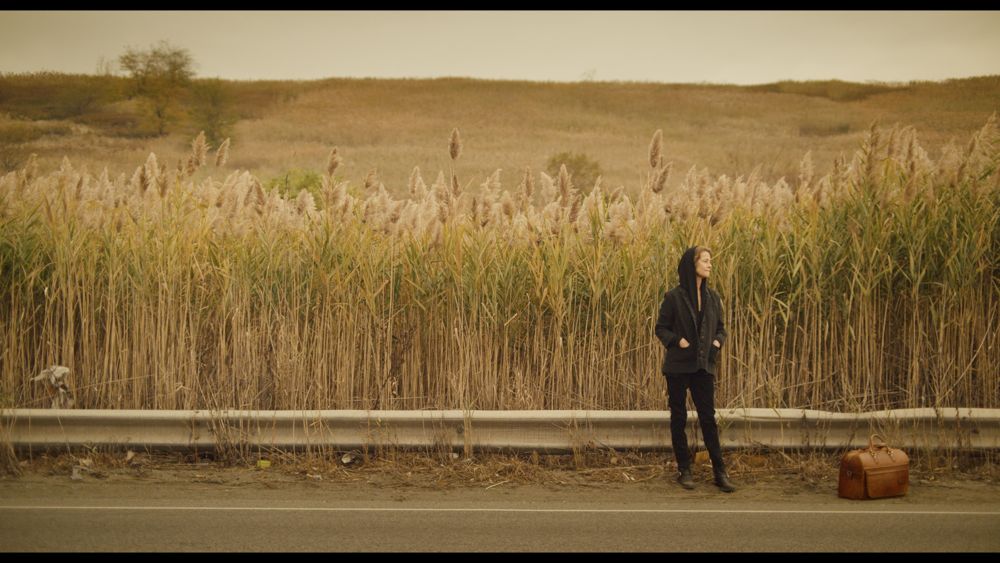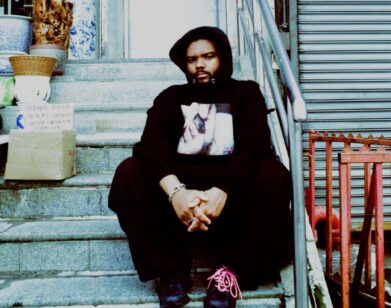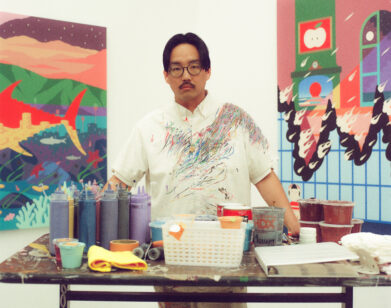Agnieszka Kurant’s Exformative Period
Artist Agnieszka Kurant brings phantoms to life. “Phantoms,” as she sees them, are any abstract, immaterial forces, of which we are probably unaware, that could potentially impact culture and society. They can be anything from an uncredited creator (like an unpaid intern) to the trillions of invisible dollars driving the stock market. In her multimedia show at SculptureCenter, “exformation,” which opened Sunday, Kurant explores how the absence of information can be as meaningful as its presence by, paradoxically, making it apparent in her artwork.
The “exformations” we’re presented with include 103.1, a hum of recorded pauses in famous speeches emitted from an antenna; Phantom Library, a miniature library of books that are mentioned in novels but have not been written; and Phantom Map, a map of islands charted by sailors at various points in time that, when aerial photography came around in the mid-20th century, were proved to be fictitious.
A highlight of the show is the short film Cutaways, featuring three characters cut out of Hollywood films: a pretty, mysterious hitckhiker played by Charlotte Rampling in Vanishing Point (1971), a lawyer played by Abe Vigoda in Francis Ford Coppola’s The Conversation (1974), and a mechanic played by Dick Miller in Pulp Fiction. At the beginning, dozens of cut characters’ names roll down the screen, reading both like end credits and a funerary-like tribute. We see listed Mila Kunis, Danny Glover, Harrison Ford and more. In the story, Kurant directs the three actors as their characters, who interact in a sort of filmic purgatory. “It’s a no-man’s land of surplus narratives,” Kurant says. They’re stuck in a liminal space: they almost came to be, but never were, at least in any way we–as an information-focused culture–would notice them. Yet as Kurant illuminates their strange universe in a pensive and astutely detailed manner, we discern the potential, unrealized, repercussions of their existence.
Imaginably, finding the information for these projects required a great deal of scholarly investigation. “I’m conducting research that you think someone would have done,” exclaims Kurant. “But no one’s done it!” She’s well equipped: Kurant, who was born in Poland, holds a MA in Art History and Creative Curating. Her work has been shown at multiple international art fairs, including Frieze Projects at Frieze Art Fair in London (2008), and she was an artist-in-residence at the Palais de Tokyo in 2004. Next year, she will have a show with Intervals at the Guggenheim, curated by John Young.
For now, as these “phantoms” speak for themselves, viewers should listen. “The negatives are as significant as what we get to see,” she says. “It’s somewhere between fiction and real.” Kurant doesn’t exactly tell us what is real, but she certainly makes us marvel at what nearly was, and what could have been.
“EXFORMATION” IS ON DISPLAY AT SCULTPURECENTER THROUGH JANUARY 27.







